Attack helicopters have come a long way in terms of technological development since the American Bell AH-1 Cobra of 1967. All of the following elements are most likely to be found in a modern, dedicated attack helicopter: a tandem seat (usually a gunner in the front, a pilot in the back), narrow-body, little to no cargo space, armored crew compartment, 20 to 30 mm cannon, shaped charge guided anti-tank missiles (ATGMs), unguided smaller diameter rockets (usually high explosive-fragmentation), and nose-mounted sensor suite. As unmanned aerial vehicles become more common, most are integrating short-range air defense features, such as Sidewinder missiles on the tips of the weapons’ pylons or Stinger missiles on the hardpoints in Western designs. Attack helicopters are costly and demand significant investment, which is why only select countries have them. Continue on to discover the most incredible attack helicopters that are still in service to this day.

The 10 Best Attack Helicopters That Are Still In Service
25. Harbin Z-19
Harbin Aircraft Manufacturing Corporation (HAMC) created the Harbin Z-19, also known as the WZ-19, a Chinese light reconnaissance/attack helicopter for the People’s Liberation Army Air Force and the Ground Force Air Force. It’s a combat variant of the Harbin Z-9, a license-built version of the Eurocopter Dauphin. It was first released in 2012 and is still in active service today.

25.-Harbin-Z-19
24. HAL Light Combat Helicopter
The Hindustan Aeronautics Limited (HAL) Light Combat Helicopter (LCH) is an Indian multi-role attack helicopter designed and manufactured by HAL (HAL). The Indian Air Force and the Indian Army have both ordered the LCH. It has the highest flight ceiling of any assault helicopter. An intensive test program was carried out, involving four prototypes in total. During these testing, the LCH earned the distinction of becoming the first attack helicopter to land in Siachen, landing many times at helipads as high as 13,600 feet (4145 meters) and as low as 15,800 feet (4145 meters) (4815 meters).

24. HAL Light Combat Helicopter
23. Sikorsky S-97 Raider
Sikorsky Aircraft might still be developing the S-97 Raider, a high-speed scout and attack compound helicopter based on the Advancing Blade Concept (ABC) with a coaxial rotor system, but it will be in active service sooner than you think. Sikorsky intended to sell it to the US Army’s Armed Aerial Scout program, among other potential uses. Simulated bird impacts testing on the fuselage at speeds up to 235 kn (435 km/h; 270 mph), the S-97’s estimated maximum flight speed, was done on the fuselage on May 22, 2015. Drop tests were also carried out to guarantee that the gasoline tanks would be safe in the case of a collision.

23. Sikorsky S-97 Raider
22. Aérospatiale Gazelle
The Aérospatiale Gazelle is a five-seat French helicopter that is frequently employed for light transport, scouting, and light attack missions. It has a single Turbomeca Astazou turbine engine and was the first helicopter to use a fenestron tail rotor rather than a normal tail rotor. Sud Aviation, subsequently Aérospatiale, developed it, and it was built in France and the United Kingdom. On the underneath cargo hook, the Gazelle can transport up to five passengers and 1,320 pounds of freight. Armed versions would be equipped with up to four wire-guided anti-tank missiles or a forward-firing 20mm cannon installed on the fuselage sides, with ammunition stored in the cabin.

22. Aérospatiale Gazelle
21. Eurocopter AS-565 Panther
The military variant of the Eurocopter AS365 Dauphin medium-weight multi-purpose twin-engine helicopter is the AS565 Panther. Combat assault, fire support, anti-submarine warfare, anti-surface warfare, search and rescue, and medical evacuation are only some of the military duties performed by the Panther. It is made in the United States, although the French Navy, Brazilian Army, Israeli Air Force, and Indonesian Navy are the primary users. The Panther has a top speed of 288 kilometers per hour, a ceiling of 2,415 kilometers per hour, and a range of 472 kilometers.

21. Eurocopter AS-565 Panther
20. Kamov Ka-60
The Ka-60, the military version of this helicopter type, was first introduced back in 1998 but has since entered something of a development purgatory. Development began as early as 1984, and the first prototype took flight in 2007. Things haven’t continued at a faster pace since then, either. Further tests over the next decade attempted to sort out issues with the engine and other problems, and it took until 2017 for the model as it currently exists to make its maiden flight. The Ka-60 has a crew of one or two, measures 51 ft 2 in., and has a maximum speed of 191 mph.

11. Kamov Ka-60
19. Black Hawk Utility Helicopter UH/HH-60
At 182 mph, a single Black Hawk helicopter can transport up to 11 soldiers and crew men, outpacing most other helicopters. The Black Hawk is propelled to those speeds by twin GE-700 engines. It has a gross weight of 20,250 pounds and can support an external load of 8,000 pounds and an internal load of 2,640 pounds. It is equipped with two 7.62 mm machine guns and has a crew of two pilots and two crew chiefs. You might be familiar with this particular helicopter for its part in the Oscar-winning 2001 film Black Hawk Down.

19. Black Hawk Utility Helicopter UH/HH-60
18. Bell UH-1 Iroquois
The Huey has been used by forces all over the world, from the Falklands War between the United Kingdom and Argentina to Japan sending Hueys to Pakistan for disaster relief and employing two Hueys for coastal surveillance after the Fukushima Nuclear Disaster in 2011. Hueys had a weight capacity of 3,880 pounds, measured 57 feet 1 inch by 8 feet 7 inches, could carry a gross weight of 9,040 pounds, had a cruising speed of 125 miles per hour and a top speed of 135 miles per hour, had a range of 315 miles, and could be armed with 7.62 mm machine guns and 2.75 in. rocket pods.

18. Bell UH-1 Iroquois
17. Bell AH-1 SuperCobra
This assault helicopter was created near the end of the Vietnam War as an upgraded version of Bell’s legendary Cobra. SuperCobras have a two-person crew, measure 45 ft x 9 in. x 10 ft 9 in., have a maximum takeoff weight of 10,000 lbs, can reach 175 mph, and can be armed with 20 mm M197 3-barreled Gatling cannons, 2.75 in. rockets, 5 in. Zuni rockets, and AIM-9 Sidewinder anti-aircraft missiles, among other armaments.

17. Bell AH-1 SuperCobra
16. Bell AH-1Z Viper
The Viper is the latest in Bell’s lengthy line of attack helicopters, and it’s meant to take the place of the SuperCobra. The US Marine Corps approved full manufacturing and declared it combat-ready in 2010. The sale of Vipers to Pakistan was approved by the US in 2015. The Armed Forces of Poland, the Czech Republic, Romania, Morocco, and Bahrain have all purchased or showed interest in purchasing Vipers. The Vipers have two-person crews, are 58 feet 3 inches long, have a maximum takeoff weight of 18,500 pounds, a cruising speed of 180 miles per hour, a combat range of 125 miles, and can be armed with a single 20 mm M197 three-barreled rotary cannon, 2.75 inch rockets, and AIM-9 Sidewinder and AGM-114 Hellfire air-to-surface missiles, among other armaments.

16. Bell AH-1Z Viper
15. Mil Mi-24 Hind
The Mi-24 was designed as an attack helicopter, however it looks more like a UH-1 Huey gunship in actuality. It can transport troops while still delivering a punch, but it’s unlike anything the Western Armies have ever flown. The Mi-24, on the other hand, is deserving of inclusion because of its multi-role support capabilities, which have made it a worldwide favorite. The Russian Air Force and 58 other users across the world employ the Mi-24. Over 2,600 planes have been produced thus far.

15. Mil Mi-24 Hind
14. CAIC WZ-10 Fierce Thunderbolt
The WZ-10 was first flown in 2003 and remains in use today. It’s equipped with a slew of cutting-edge technologies, including a jaw-dropping electronic warfare system. The WZ-10’s primary purpose, like that of many attack helicopters, is anti-tank warfare, but it is also quite capable in air-to-air combat. The CAIC has several noteworthy variants.

14. CAIC WZ-10 Fierce Thunderbolt
14)i. CAIC Z-10K
This helicopter is a simplified version of the Z-10H with a 930 – 950 kW indigenous Chinese WZ-9 engine. Z-10K is modified from baseline Z-10 at the request of People’s Liberation Army Air Force Airborne Corps. To cut weight and increase range and airborne performance, the MASWS, IRCM, add-on armor plates, and a few other subsystems were eliminated.

14)i. CAIC Z-10K
14)ii. CAIC Z-10ME
This upgraded variant is equipped with active and passive countermeasures, missile approach warning system, radar warning receiver and a new engine exhaust nozzle (pointed upwards to reduce infrared signature). It also has new intake filtration systems and armor panels, more powerful 1200 kW engine, larger ammunition magazine, appliqué graphene-based armor panels, infrared jammer, and new IFF interrogator. It was first unveiled in 2018 and remains in active use today.

14)ii. CAIC Z-10ME
13. Kamov Ka-50
The Russian Ka-50 is 52 feet 6 inches long, has a maximum takeoff weight of 23,810 pounds, can reach 196 mph thanks to two Klimov VK-2500 turboshaft engines, and can be armed with one transportable semi-rigid 30 mm Shipunov 2A42 gun, S-8 and S-13 rockets, and a variety of missiles and bombs.

13. Kamov Ka-50
12. Mil Mi-28
This assault helicopter has been awarded a long-term state contract that will keep it in production until 2027. The Mi-28 is 55 feet 10 inches long, has two Klimov TV3-117 turboshaft engines, and can be armed with a 30 mm Shipunov 2A42 gun located on the chin, Ataka-V anti-tank missiles, and S-8 and S-10 missiles.

12. Mil Mi-28
11. Boeing AH-64D Apache
The Apache is widely considered to be one of the most successful assault helicopters in history. From attacks on Iraq’s radar system during the Gulf War to later operations in Iraq and Afghanistan to NATO engagement in Bosnia and Herzegovina, the Apache AH-64D has seen a lot of action over the last three decades. It’s a twin-engine attack helicopter with armor-piercing weapons like an M230 30-mm gun, Hydra-70 2.75-inch rockets, and laser-guided Hellfire missiles that can fire 600 to 650 rounds per minute. It has a combat speed of 166 miles per hour, a top speed of 188 miles per hour, a range of 260 miles per hour, and a gross weight of 26,260 pounds. There are several variants of the Apache.

20. Boeing AH-64 Apache
11) i. Apache AH-64A Variant
The AH-64A was the first assault helicopter to enter production. In an armored compartment, the crew sits side by side. Two GE T700 turboshaft engines power the ship. The 701 engine was used in the A-model until 1990, when the engines were replaced with the more powerful 701C variant. Boeing was awarded a $136.8 million contract on September 25, 2012, to remanufacture the last 16 AH-64As into the AH-64D Block II configuration.

11) i. Apache AH-64A Variant
11) ii. Apache AH-64C Variant
In late 1991, Congress approved additional cash for a program to convert AH-64As to AH-64B+ versions. The plan to upgrade to the AH-64C was revised due to this additional money. Except for mast-mounted radar and newer 700C engine variants, the C upgrade would contain all changes made to the Longbow. After 1993, however, the C designation was no longer used. The sole difference between the C model and the radar-equipped D model after AH-64As received the upgraded engine in 1990 was the radar, which could be swapped from one aircraft to another. As such, the decision was made to eventually label both variants “AH-64D.”

11) ii. Apache AH-64C Variant
10. Denel Rooivalk
The Rooivalk of South Africa is based on the French Aérospatiale SA 330 Puma. As a result, the design is heavily reliant on French technology and components. Denel Aviation succeeded in constructing an aircraft that is on par with its competitors, despite its lofty goal of making one of the best attack helicopters in the world. The Rooivalk, equipped with highly sophisticated indigenous Mokopa ATGMs, outclasses everything South Africa could encounter in its geopolitical region. The Rooivalk is a far-reaching concept, but Denel’s technological reach considerably surpasses its grasp, with only 12 instances created and financial challenges looming over operational readiness.

10. Denel Rooivalk
9. CAIC Z-10
The Chinese Z-10 was designed with cooperation from the Russian Kamov design bureau, making it lighter than its competitors. It is the country’s first indigenous attack helicopter. It is a new design that was introduced in 2012 and already fulfills the needs of the Chinese military forces numerically. The Z-10 has yet to be put to the test. Over 300 have been made for the People’s Liberation Army so far.

9. CAIC Z-10
8. Mil Mi-24 Hind
For the past 40 years, the aged design has been a repeated aerial image of Asian and African conflicts. It is a versatile platform employed by various states and paramilitary groups. The Mi-24 is what the AKM is to assault rifles. A classic from the Cold War era that has lasted a long time. It is much larger than the subsequent versions because it is a combination attack/transport helicopter. It is still relevant today, despite being heavily armed and armored and being less nimble by today’s standards.

8. Mil Mi-24 Hind
7. Agusta A129 Mangusta
The Italian A129 attack helicopter is the first of its kind in Western Europe. The Italian design, which was the lightest among its global rivals, was redesigned after the Cold War ended. Because NATO no longer expected to face a Soviet armor onslaught, the aircraft were streamlined and ballistic protection was reduced. It was thought to be comparable to the American AH-64 Apache at the time. The A129 is equipped with typical NATO weapons such as Hellfire and TOW ATGMs. Sixty units were produced, with more than 30 remaining in use today.

7. Agusta A129 Mangusta
6. TAI T129 ATAK
The T129 is a Turkish modernisation of the Agusta A129 Mangusta, with which it shares just the fuselage. Internally, Turkish technology is used, with updated avionics, airframe, and armaments. Currently, 60 units are in service, with the capacity to produce 32 more if needed. The T129 appears to be a more successful worldwide version of its Italian predecessor, with interest from a number of countries including Qatar, the Philippines, and Pakistan. This helicopter was so successful that there are two additional variants still in use.

6. TAI T129 ATAK
Up next we have the five highest ranking attack helicopters still in use today. These helicopters are immense and truly set the user nation significantly above the rest. So which attack helicopters made the final cut?
6) i. TAI T129A EDH
The T129A is a “combat support” version featuring a 20 mm gatling gun and ammunition, as well as the capability to carry 70 mm (2.75 in) rockets; nine T129As have been ordered. The Turkish Army has been given six helicopters. The T129As will be updated to the T129B specification.

6) i. TAI T129A EDH
6) ii. TAI T129B
The T129B is a “multi-role” aircraft with electronic warfare capabilities. A total of 51 helicopters were built, with one serving as a weapons testbed. The T129B is equipped with a 20 mm gatling gun and can carry up to eight UMTAS ATGMs, sixteen Cirit missiles, eight air-launched Stinger missiles, and 76 70 mm (2.75 in) unguided rockets.

6) ii. TAI T129B
5. Eurocopter Tiger
The Tiger is the second and most modern attack helicopter to emerge from Western Europe, having been developed jointly by France and Germany. It is the most popular and successful European design, having sold over 180 units. Carbon laminates, Kevlar, and honeycomb-shaped components make up 80 percent of the airframe, which is constructed using a composite pattern. The Tiger is used by German, French, Spanish, and Australian forces and is equipped with a variety of Western missiles, rockets, and a French cannon.

5. Eurocopter Tiger
There are several variants of the Tiger; a different one for each of Germany, France and Australia.
5) i. Germany: UH Tiger
The UHT (Unterstützungshubschrauber Tiger) is a medium-weight multi-role fire support helicopter built for the Bundeswehr (German Armed Forces). The UHT can carry PARS 3 LR “fire and forget” and/or HOT3 anti-tank missiles, as well as Forges de Zeebrugge’s 70 mm (2.8 in) Hydra 70 air-to-ground fire support rockets. For air-to-air combat, four AIM-92 Stinger missiles (two on each side) are equipped. It does not have an integrated gun turret like the HAP/HCP variant, but a 12.7 mm (0.50 in) gunpod can be added if required. The armament configuration was created to be multirole and easily convertible, allowing it to cover a wide range of mission scenarios while also being effective against a variety of targets.

Germany UH Tiger
5) ii. France: Tiger HAP
The Tiger HAP/HCP (Hélicoptère d’Appui Protection) is a French Army-built medium-weight air-to-air combat and fire support helicopter. It has a chin-mounted GIAT 30 mm gun turret and can fire 68 mm SNEB unguided rockets or 20 mm machine cannons as well as Mistral air-to-air missiles for fire support. By 2012, France had delivered 40 HAP at a cost of €27 million each unit (US$36 million) in 2012 prices. France opted in December 2015 to update its entire Tiger fleet to the HAD standard by 2025.

France Tiger HAP
5) iii. Australia: Tiger ARH
The Australian Army ordered the Tiger ARH (Armed Reconnaissance Helicopter) to replace its OH-58 Kiowas and UH-1 Iroquois-based ‘Bushranger’ gunships. The Tiger ARH is a modified and enhanced version of the Tiger HAP with upgraded MTR390 engines and a laser designator integrated into the Strix sight for Hellfire II air-to-ground missile shooting. The ARH uses 70 mm (2.75 in) rockets from Belgian company Forges de Zeebrugge instead of SNEB unguided rockets (FZ). In December 2001, 22 of the variants were ordered.

France Tiger HAP
4. Bell AH-1Z Viper
The American Viper is a third-generation descendant of the iconic Bell AH-1 Cobra, which served as the forerunner to all modern attack helicopters. The asset was first used by the US Marine Corps in 1965. The Viper, the most recent model in the class-defining design, proven to be a capable and long-lasting platform. The Marines want to use 189 Vipers, which were introduced in 2010. The platform maintains its pace 55 years later, with new orders from Bahrain and the Czech Republic.

4. Bell AH-1Z Viper
3. Mil Mi-28NM Havoc
The latest Russian assault helicopter joins the legendary Mi-24 and the one-of-a-kind Ka-50 family. The Havoc has finally moulded itself into an all-around efficient design after an extraordinarily long development span of 27 years from first flight to debut. It is well renowned for its armor, which includes windshields that can survive hits from 14.5114mm bullets. During the fight of Palmyra in Syria, the Havoc had a successful combat debut. It has been in service with Russia, Iraq, and Algeria since 2020, with further orders on the way.

3. Mil Mi-28NM Havoc
3) i. Mi-28NE
This is the Mi-28N export version, which is now in use by the Iraqi and Algerian air forces. Russian Helicopters announced an updated Mi-28NE model in August 2018, including upgrades to the main rotor system and engine unit, as well as additional on-board radio-electronic equipment. The helicopter is equipped with contemporary directional IR countermeasures (DIRCM) against short-range IR guided missiles, as well as increased armor. Its composite rotor blades can survive shells up to 20–30 mm in diameter, and the fuel system is fire and explosion resistant. It will also be able to fire the latest Khrizantema-V anti-tank guided missiles (9M123) (ATGMs).

Mi-28NE
3) ii. Mi-28NM
An updated variant of the Mi-28N came to fruition in 2009. The helicopter’s nose hull has been redesigned due to the removal of its nose antenna, a new H025 radar station for all-around visibility, more powerful VK-2500P engines with FADEC instead of the previous Klimov TV3-117VMA engines, and improved rotor blades, resulting in a 13 percent increase in maximum speed and a 10% increase in cruise speed. Aside from that, it has a new “Izdeliye 296” onboard radio-electronic data processing system and an updated fire-control system. It can be armed with the 9M123 Khrizantema-V and 9M127-1 Ataka-VM anti-tank missiles.

Mi-28NE
3) iii. Mi-40
Mil Mi-40 was a planned utility version of the Mi-28 that was first proposed in 1983, publicized in 1992, and first flown at the Moscow Airshow in 1993. It was designed to replace the Mil Mi-24 and Mi-8 assault helicopters in the “Aerial Infantry Fighting Vehicle” category. It has two 1,863 kW Klimov TV3-117 turboshaft engines, a four-blade main rotor, four-blade Delta H tail rotor (both Mi-28), and retractable tricycle-type landing gear. It weighs around 11–12,000 kg and has a 3300 m ceiling, a maximum speed of 314 km/h, and a cruise speed of 260 km/h.

Mi-40
2. Kamov Ka-52 Hokum-B
The Ka-52 attack helicopter is probably the most unusual attack helicopter in service today, with tandem side-by-side seating, ejection seats, dual contra-rotating main rotors, and no tail blades. It is currently one of the most maneuverable helicopters in the world. The Ka-52 can act as a target detector and designator for a larger helicopter group of Mi-24s and Mi-28s, thanks to its advanced battlefield management system. The Ka-52 has all of the firepower expected of a modern attack helicopter, despite the fact that its autocannon is positioned in a fixed position and lacks the flexibility of a turret.

2. Kamov Ka-52 Hokum-B
2. i) Kamov Ka-50
The Kamov Ka-50, The “Black Shark” is a Russian single-seat attack helicopter featuring the Kamov design bureau’s signature coaxial rotor technology. It was developed in the 1980s and entered Russian army service in 1995. The Progress firm in Arsenyev manufactures it. It is employed as a scout helicopter with heavy weapons. It was the first operational helicopter with a rescue ejection system in the world, and it was world-renowned until it was surpassed by its successor, the previously mentioned Kamov Ka-52.

Kamov Ka-50
2. ii) Kamov Ka-50Sh
The Ka-50SH has a different appearance than his predecessor, which perekomponovana under the co-location of laser-television day and night sighting channels thermal-flight – navigational complex “Rubicon-N.” The daily feed from the fuselage’s bow shifted into the newly constructed fairing, which is slightly expanded forward. The moveable ball diameter is 640 mm; this helicopter is ideal for night attacks.

2. ii) Kamov Ka-50Sh
2. iii) Kamov Ka-52 Alligator
The Russian Air Force operates the Ka-52 Alligator, an all-weather attack helicopter. The Ka-52 is a twin-seat variation of the Ka-50 assault helicopter developed by Kamov Design Bureau (part of Russian Helicopters). For the Russian Air Force, it is a highly enhanced version with a two-seat side-by-side cockpit.

2. ii) Kamov Ka-50Sh
Up next we have the highest ranking attack helicopter still in active use today…
1. AH-64E Apache Guardian
The Apache, the workhorse of the United States Army, is the most common and widely used assault helicopter in the Western world and its allies. Over 2400 will be built by 2020 for the United States and its allies, including Israel, the United Kingdom, Japan, South Korea, and others. The Apache is the most experienced and proven Western warfighter in its class today, having served in every major American and NATO combat since its inception. Hellfire missiles, M320 chain gun with 1200 rounds of 30 mm ammo, and Hydra rockets – the Apache is a very reliable and successful vehicle that will be around until at least 2048.

1. AH-64E Apache Guardian
Now that we’ve discovered the best attack helicopter still in active use,
continue on to see the top 10 aircrafts that we couldn’t include in the list.
These aircrafts are debatably better than attack helicopters, seeing as how they can reach greater speeds and velocity, but certainly come with their controversies. Number 1 (Soviet Union) is simply too powerful!
10. Lockheed F-104 Starfighter – U.S.A.
The Lockheed F-104 Starfighter was introduced to the globe in the late 1950s. Until the turn of the century, it was utilized by a variety of military units all over the world. This aircraft has previously been employed by Italy, Turkey, Spain, Germany, and the United States. This model is still available for private purchase, despite the fact that it has been discontinued. Kelly Johnson, a well-known aeronautical engineer, contributed to the Starfighter’s development. He was also involved in the development of the SR-71 Blackbird and the U-2 spy plane. When it was still in service, it was lethal and sparked a lot of debate.
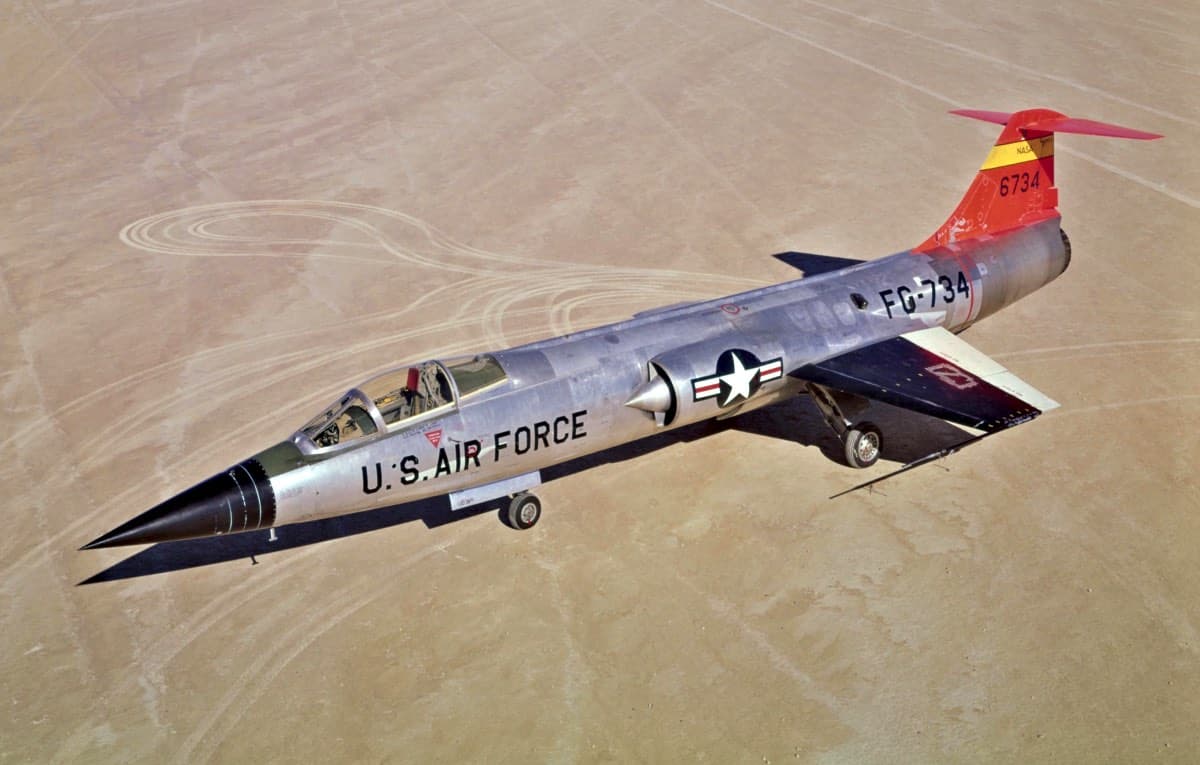
9. P-51 Mustang – U.S.A.
In North America, the P-51 Mustang is regarded a classic. During WWII, it was designed as a medium-altitude fighter plane for the British. It, on the other hand, exceeds all expectations. After the Rolls Royce Merlin and then the Packard V-1650-7 engines were installed, it was able to reach greater altitudes and generate more power. Because of its long-range capability, this aircraft performed an important part in reconnaissance missions and accompanied a significant number of bombers during various engagements. The P-51 Mustang has a top speed of 430 mph.
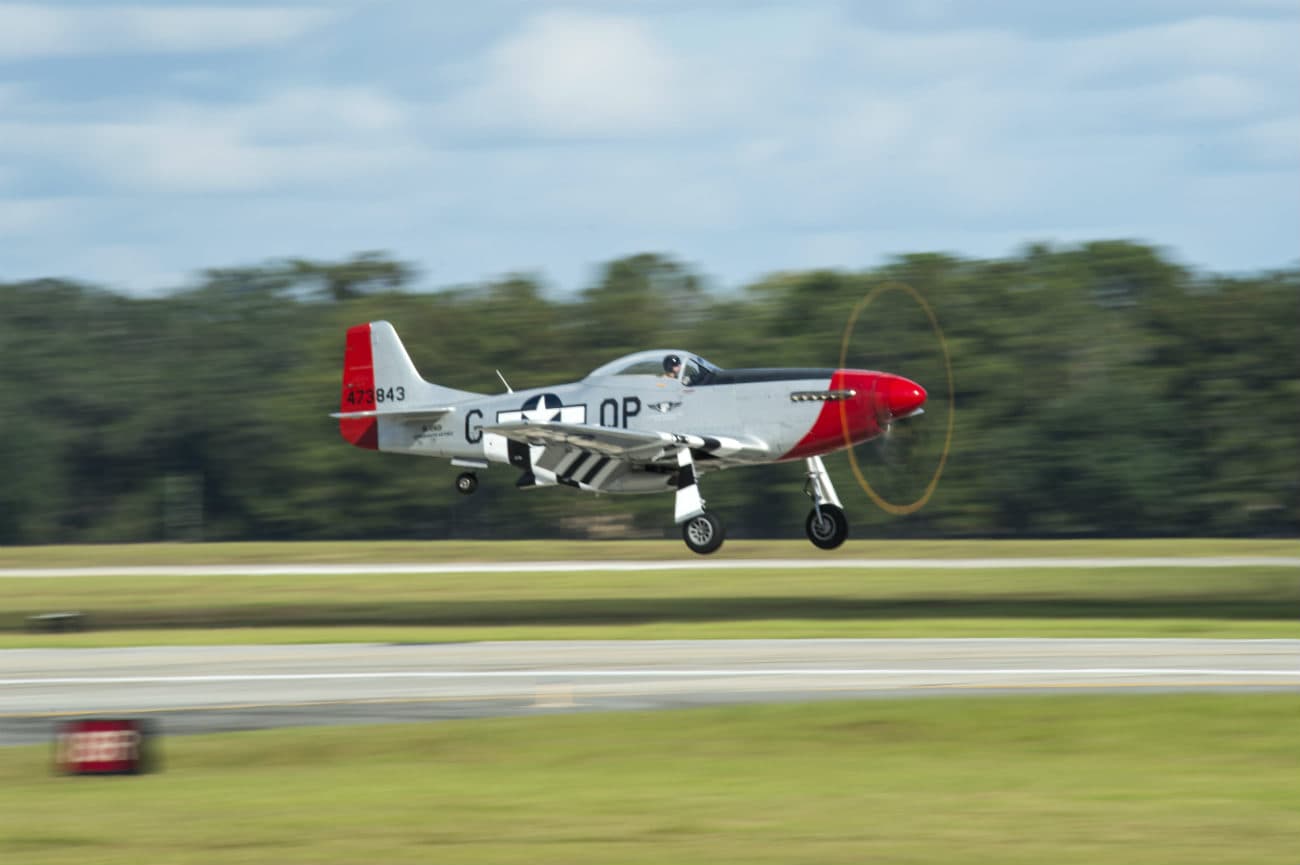
8. Supermarine Spitfire – United Kingdom
Did you know that the Supermarine Spitfire was the most popular British aircraft during WWII? It was also the only one that was consistently produced during the battle. There were a few different variations, each with its own wing design. The 50 Supermarine Spitfire, on the other hand, is still flying today.

7. F-4 Phantom II – United Kingdom
Did you know that the Supermarine Spitfire was the most popular British aircraft during WWII? It was also the only one that was consistently produced during the battle. There were a few different variations, each with its own wing design. The 50 Supermarine Spitfire, on the other hand, is still flying today.
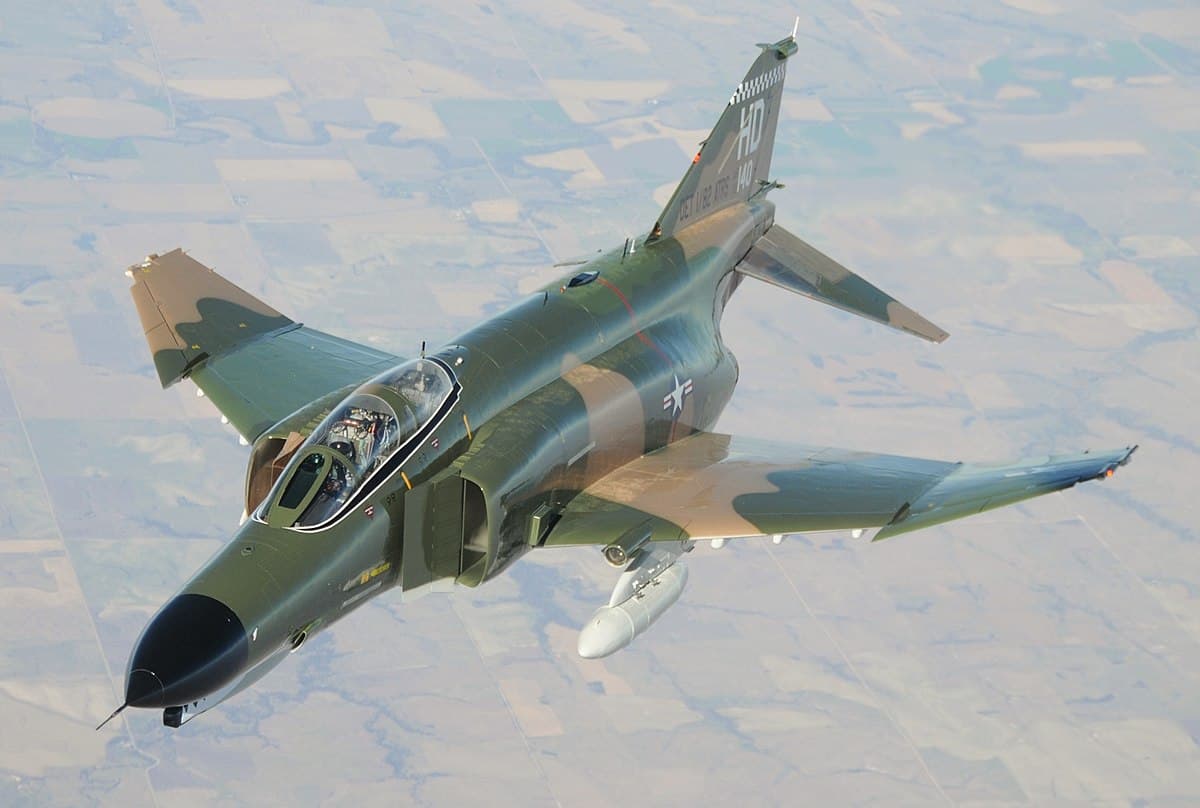
7. Curtiss P-40 Warhawk – U.S.A.
Throughout WWII, the Curtis P-40 Warhawk was a significant player in the skies. During the battle, it was one of the three most widely used US fighters. It has received several updates throughout the years as a result of performance issues and difficulties. Despite this, it isn’t considered a “top fighter,” but it does have a great look. It’s one of the reasons it’s so popular with aviation enthusiasts all over the world.
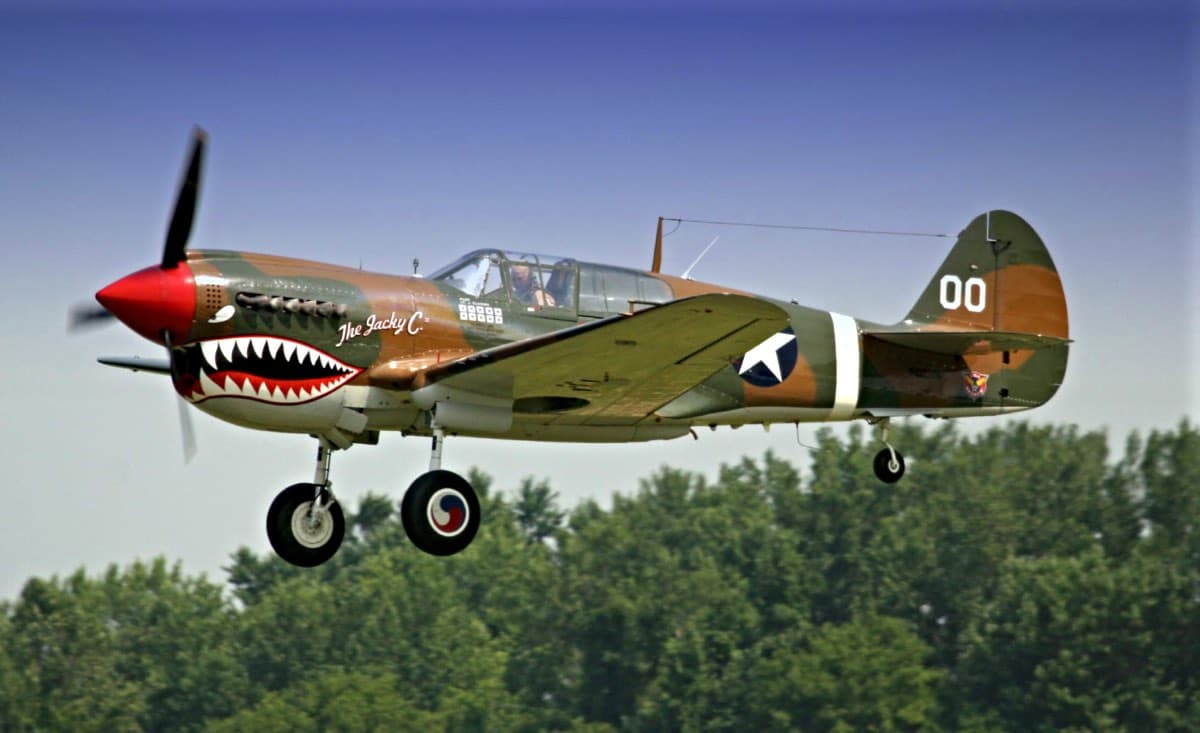
6. B-29 Superfortress – U.S.A.
Even by today’s standards, the B-29 Superfortress is a huge plane. This aircraft, created by Boeing in the early 1940s, had complex innovations that improved the bomber plane. It had pressurized crew rooms and remote-controlled weapons, among other things. It was also renowned as the world’s heaviest manufacturing plane! During WWII, this was yet another significant aircraft. Observation and in-flight refueling were among the missions performed by the B-29.
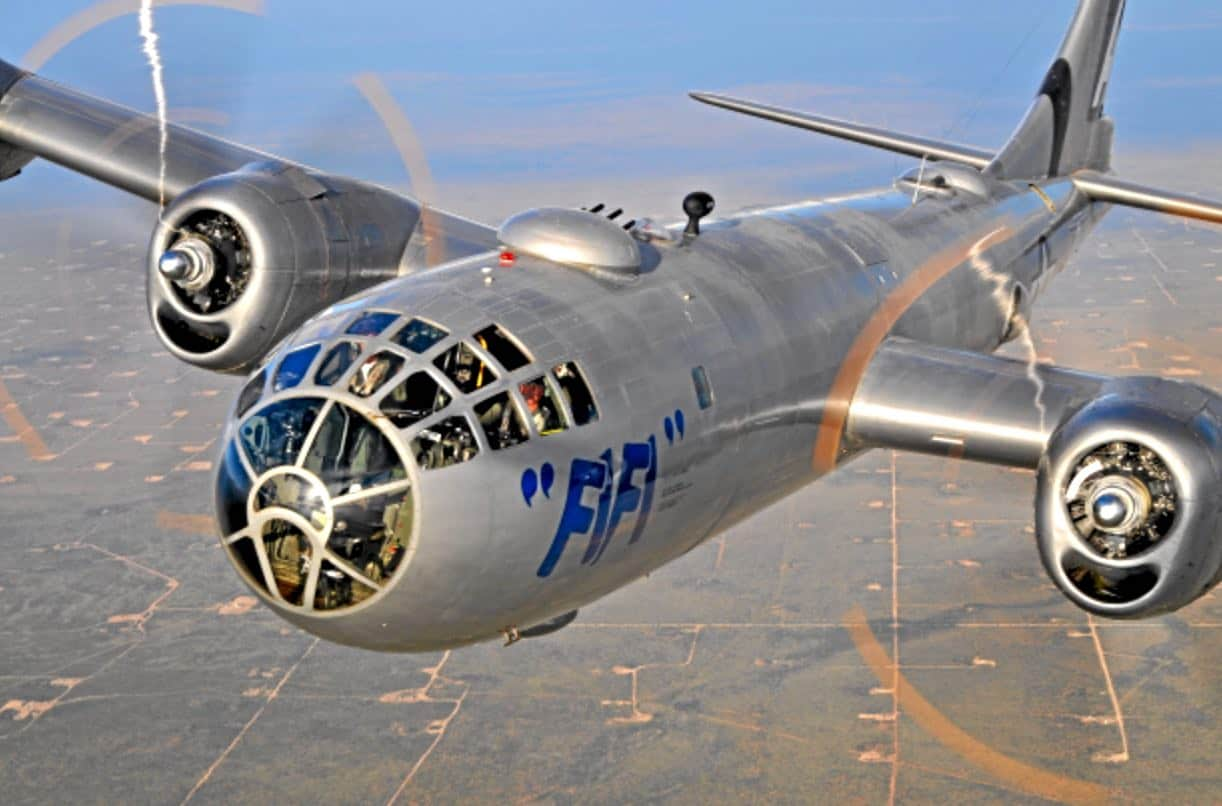
5. Northrop F-5 – U.S.A.
We’ve got a handful of prototypes of a light supersonic jet fighter here. The Northrop F-5 is most renowned for its simple, low-maintenance design that provides excellent flying and ground performance. It was built for the first time in 1962. It was also widely exported and played a crucial role in the military of the Allies. In the United States, it is still used as a training aircraft! This is a hypersonic fighter jet that can reach speeds of over 1,000 miles per hour.

5. Bell UH-1 Iroquois – U.S.A.
The Bell UH-1 Huey is a military helicopter in use all over the world. It’s presently used in more than 40 countries. We don’t know about you, but we don’t think it takes away from the excitement! The first time it was used was during the Vietnam War. It was once employed in a variety of processes. Some types served as medical evacuation vehicles, transporting both workers and students. It has a top speed of 125 miles per hour and can carry a crew of one to four persons.
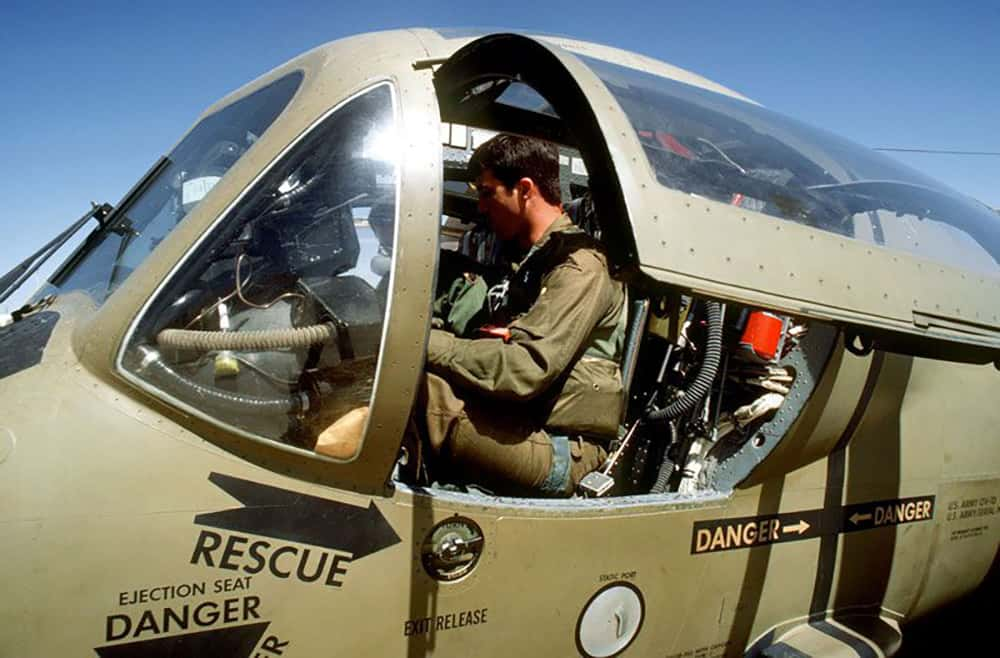
4. Lockheed T-33 T-Bird – U.S.A.
The Lockheed P-80 Shooting Star provided the US Air Forces with numerous advancements. The new planes lacked propellers and operated in a different manner than prior planes. In their preparation for the P-8-s, the propeller-driven trainers failed terribly. Finally, the fuselage of the P-80 was expanded to accommodate a second tandem seat. This is how the Allison J33-A-35 turbojet for the T-33 Shooting Star was created. It was the first jet fighter training aircraft for the United States Air Forces!
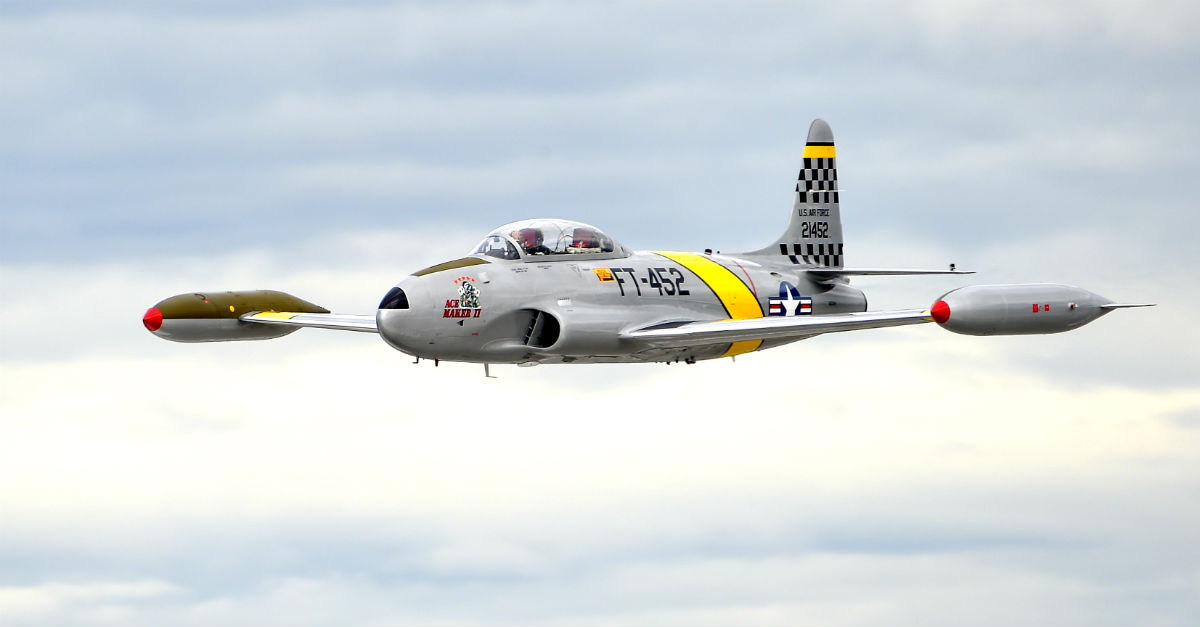
4. Douglass A-4 Skyhawk – U.S.A., Israel, Argentina
The Lockheed P-80 Shooting Star provided the US Air Forces with numerous advancements. The new planes lacked propellers and operated in a different manner than prior planes. In their preparation for the P-8-s, the propeller-driven trainers failed terribly. Finally, the fuselage of the P-80 was expanded to accommodate a second tandem seat. This is how the Allison J33-A-35 turbojet for the T-33 Shooting Star was created. It was the first jet fighter training aircraft for the United States Air Forces!
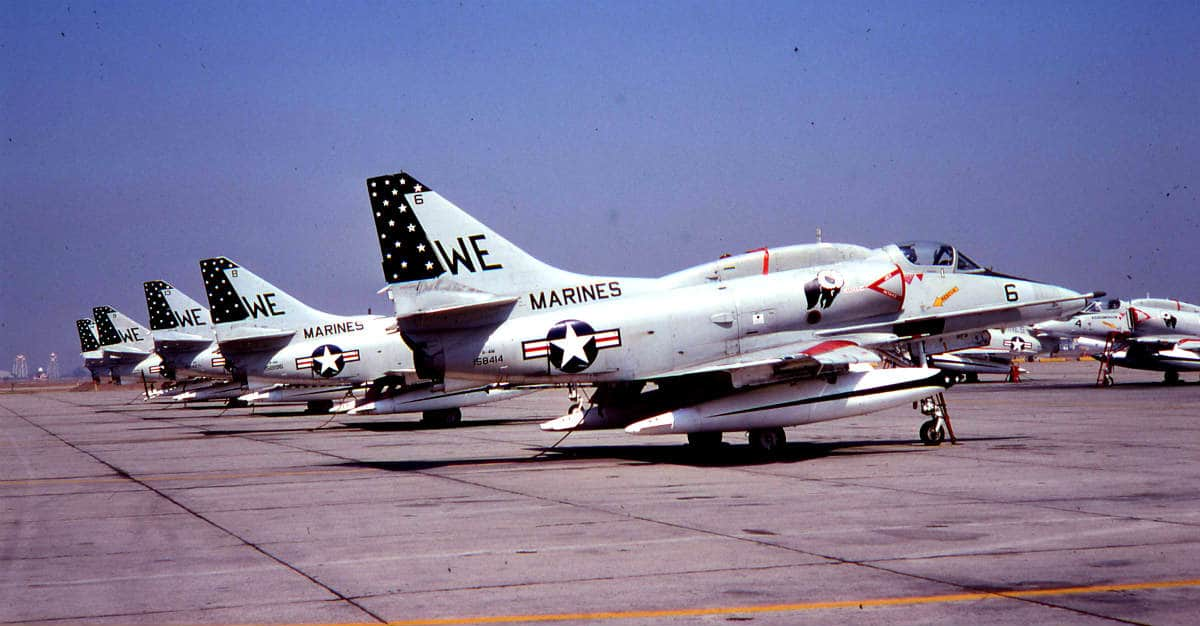
3. Mikoyan-Gurevich MiG 21 – Soviet Union
The Mikoyan-Gurevich MiG 21 became a standard plane in several military air units after its launch in 1959. The Indian, Libyan, and Soviet air forces were the primary users of this system. In the Soviet Union, this aircraft was the first to be capable of both combat and interception missions. It held a number of world records, including the record for the most supersonic aircraft ever built. Even if it is still in operation in other countries, this military aircraft can be purchased for civilian use. Over the last four decades, the Soviet Union and its allies are thought to have created around 10,000 units.
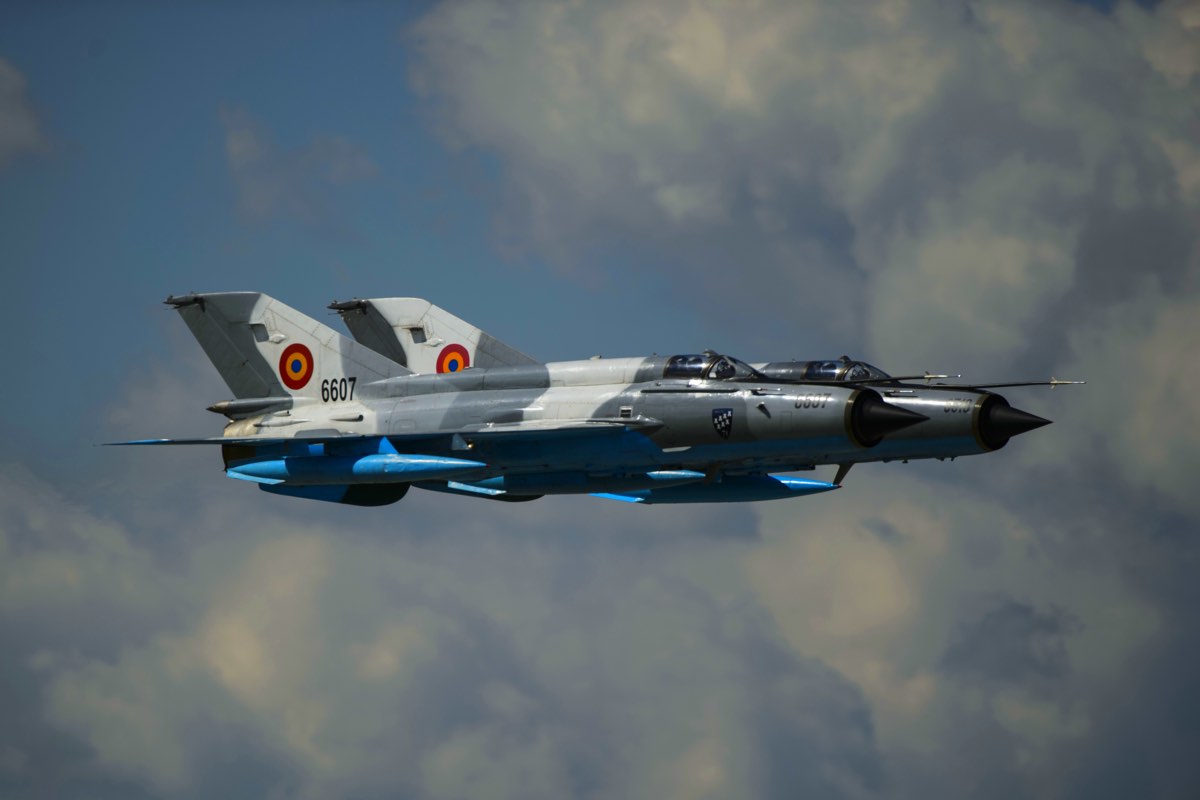
2. Hawker Hunter – United Kingdom
The Royal Air Force of the United Kingdom commissioned the MK-58 Hawker Hunter as a fighter jet in the late 1940s and early 1950s. It was later used as a fighter-bomber and for intelligence gathering. There were single and double pilot versions made. This was widely exported, and militaries all across the world have utilized it. With a top speed of just under 700 mph and a reputation as one of the greatest early fighters, it was officially decommissioned in 2014 and is now designated as a “warbird.” Although some are still used by the military for threat simulation and target training, many are in the hands of groups that perform aerial displays.

There are too many aircrafts that deserve top spot, here are the ones that made it this far…
1. Aeo L-39 Albatross – Czechoslovakia
The L-39 Albatross was the Second Generation’s first jet trainer. It has a 40-foot wingspan and a 31-foot wingspan, and is powered by a 3800-pound-thrust Ivchenko-Progress AI-25TL high-bypass turbofan engine with a range of nearly 650 miles. This aircraft can fly for two and a half hours on internal fuel, which is astounding.
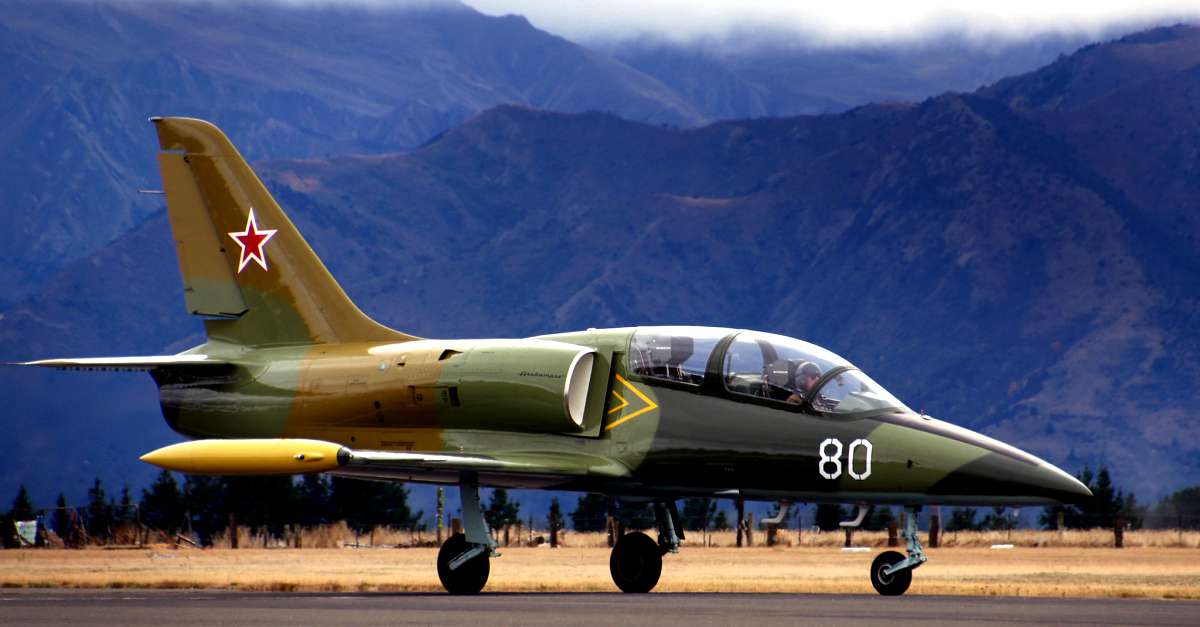
1. Grumman OV-1 Mohawk – U.S.A.
The Grumman OV-1 was created in the 1950s to replace the Cessna L-19 Bird Dog. The US Army utilized it as an all-weather surveillance and attack jet capable of outrunning and outpowering the Bird Dog. Grumman Aircraft Corporation won an award for the OV-1 Mohawk concept! The Mohawk was the first turboprop aircraft used by the United States Army. It performed admirably in a number of military missions. It was protected from small ground weapons by bullet-proof glass and an aluminum-alloy floor, and its mounted engines and big finned tails gave it remarkable maneuverability. At least one variation features a built-in camera and a more powerful side-looking radar, allowing it to scan the ground and provide tracking.
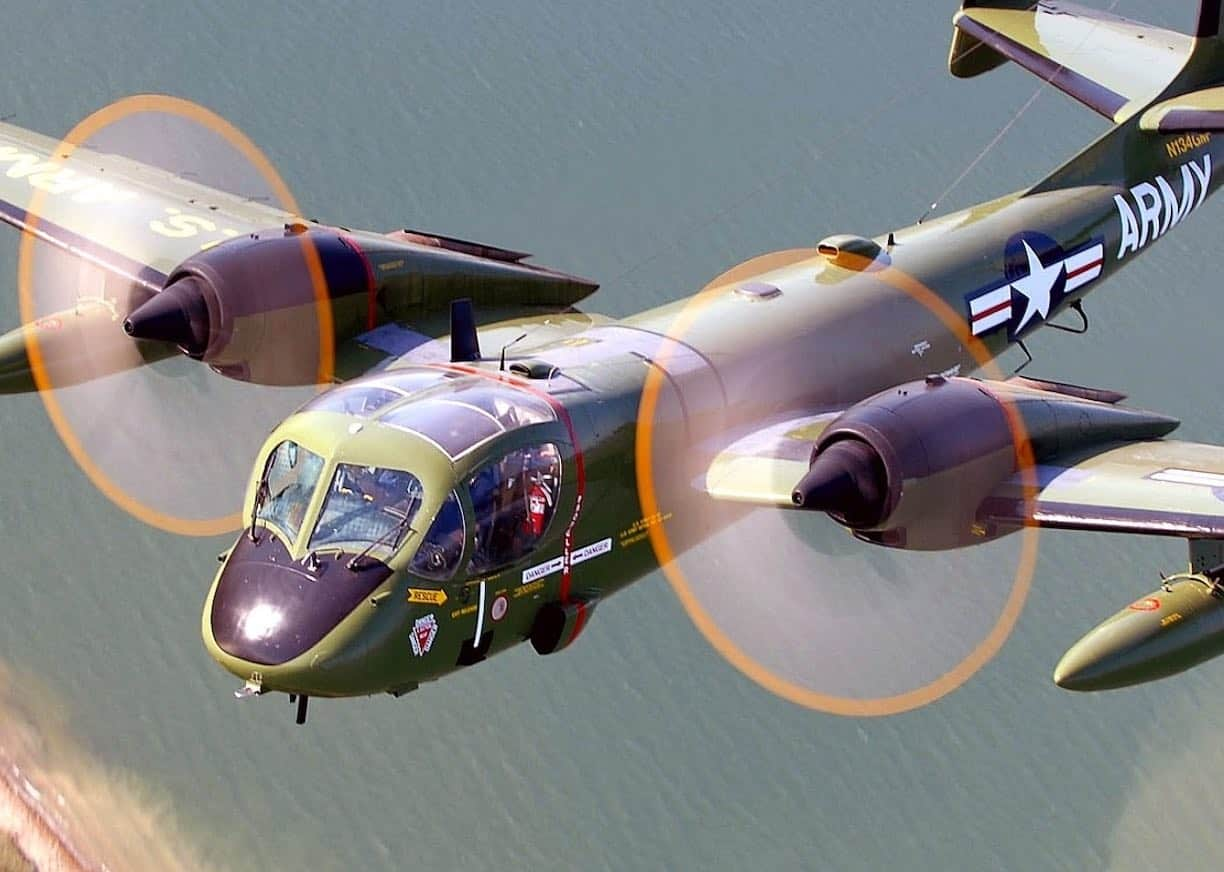
1. Hawker Siddeley Harrier GR.3 – United Kingdom
The Hawker Siddeley Harrier was based on the vertical/short take-off and landing concept, which had previously been tested. However, this was the first one to succeed. The GR.1 and GR.3 versions were ordered by the Royal Air Force (RAF). In the 1970s, the US Marine Corps got a significantly modified version called as the AV-8A. The GR.3 was a single-seat, single-engine jet with a wingspan of 25 feet and a length of 46 feet. It was propelled by a Rolls-Royce Pegasus 103 turbofan. On the tail, nose, and wingtips were four vertical flight puffer jets. It didn’t require large runways or ground infrastructure because of its V/STOL capability, as did all other aircraft at the period. During the Falklands War, it was crucial.

1. Boeing F/A-18 Hornet – Australia, U.S.A.
The McDonnell Douglas F/A-18 Hornet is a twin-engine, supersonic, all-weather, carrier-capable multirole fighter and attack aircraft. The F/A-18 was developed in the 1970s by McDonnell Douglas (now part of Boeing) and Northrop (now part of Northrop Grumman) from the latter’s YF-17 for use by the US Navy and Marine Corps. The Hornet is also utilized by the air forces of several other countries, as well as the United States Navy’s Blue Angels Flight Demonstration Squadron.
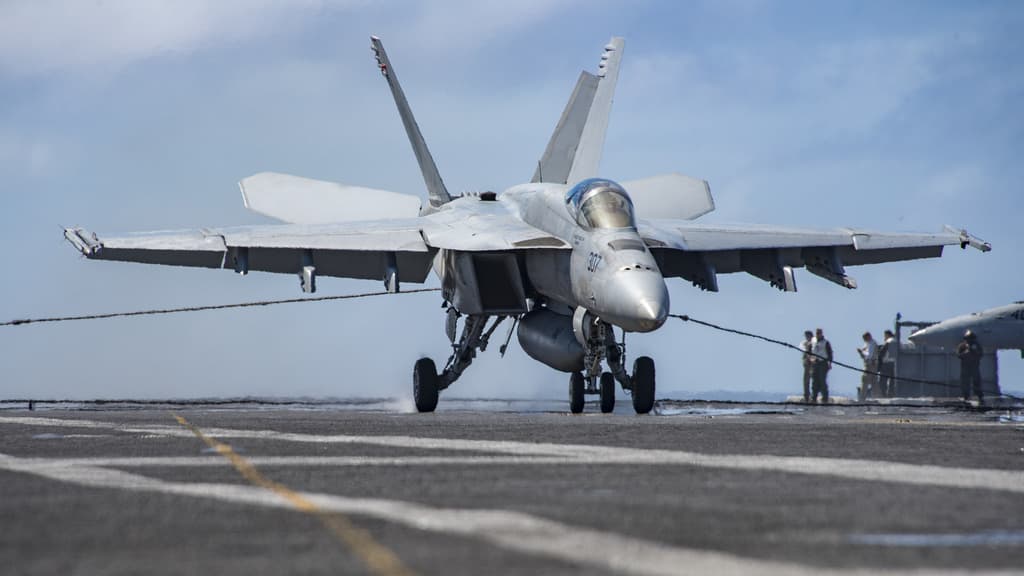
1. Sukhoi Su-27 – Russia
The Soviets designed this military aircraft to compete with the Fourth Generation’s F-14s and F-15s. The aircraft boasts tremendous statistics. This craft boasts supermaneuvrability, two engines, and a top speed of Mach 1.8. You’re in for a crazy ride once you get your hands on this bad guy! It dwarfs the F-15 with a length of more than 10 feet and a width of more than 5 feet. It had ten weapon hardpoints and shielded radar technology, but those features were removed before it was made public. The stripped variant is the quickest and lightest alternative because the fuel must be carried within the plane.

